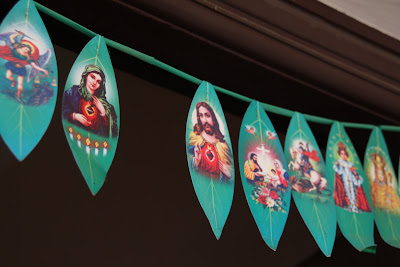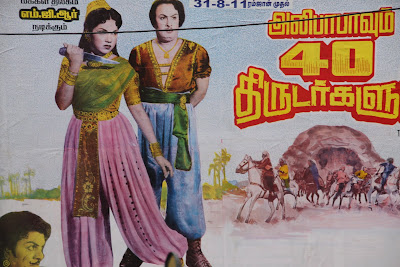Yesterday was a day of achievement for us, as a team. After months of hard work to identify the “right” livelihood activities to be promoted through the program and develop training modules and resources, we finally launched our first set of trainings in the supplemental income generating (SIG) activities- wage based, low skill jobs that provide nominal increases in income to the households to help meet their immediate consumption needs. We are focusing for now on two activities- kitchen gardening and agarbatti (incense stick) rolling. While both are existing activities in the panchaayat we work in, these women are either not engaged due to a lack of awareness or confidence in how to take up the activity or have been unable to access value addition in the form of skills enhancement to roll higher quality (and hence, higher priced) agarbatti or training in agriculture methods to grow vegetables more efficiently throughout the year. In the case of agarbatti, the activity involves direct contact with harmful substances that are breathed in by women and children alike. Food is often eaten without washing the substance off their hands, so incorporating health and hygiene practices into the training module is another value addition. An interesting fact I learned during my time here is that Bihar is the second largest producer of agarbatti in India! Many of us were raised with agarbatti (commonly referred to as oodhupaathi in Tamil) lit in our homes, sometimes each evening, but without doubt, on religious holidays and festivals. Each time I light an agarbatti stick, I will always think of these poor women from whose hands it originated. I hope you will too!
 ASHG members giggle shyly as the field project manager discusses agarbatti income potential
ASHG members giggle shyly as the field project manager discusses agarbatti income potential  Rekha Devi, already a highly skilled roller, is helping to enhance her peers' skills
Rekha Devi, already a highly skilled roller, is helping to enhance her peers' skillsI’ve begun sensing a deeper, intangible change among these women with each and every visit I’ve made these last one and a half years—something more profound than any monitoring and evaluation (M&E) plan can capture. It is a change based on the human connection, largely due in part to something called trust. The women have extended this invaluable commodity to us, as service providers and as individuals intent on helping improve their lives with no expectation of anything in return from them. Yesterday, as they opened up to us at the advent of our first set of livelihood promotion activities in Shivrampur village, I was touched by the apparent shift from their skeptical, introverted selves, constantly averting eyes, faces absent of smiles, to vivacious, outspoken, and empowered women, who were keen and proactive in sharing feedback and a sincere gratitude: “Many others have come and gone. We have been cheated many a time. You people have worked so hard for us, more than our own family members would do for us. And, now you are doing something for us.” As discussed in my post 'August Field Visits,' these women and their families have lived their entire lives knowing nothing more than depravity, exploitation, and neglect. As they practiced rolling more and more fine incense sticks, they proudly raised their finished products, seeking our approval and that of the trainer. We laughed together during those subtle moments of humor that we’ve all grown to silently notice through over one year of interactions.
For the first time, they opened up and shared the initial reservations and reason for opposition from their husbands to partake in the program. Their husbands would desperately ask, “Do you even know who these people are? Do you know their background or their intentions? How do you know that they won’t actually sell you on the market?” To share such content, which in itself is considered too shameful to be discussed with strangers, and men at that, was another indicator of their newly cultivated trust. My heart became heavy when I learned that women from these very communities had been victims of human trafficking. In a society where honor and dignity are directly correlated with a certain notion of “purity/tarnishing” of the body, this so-called livelihood “option” (or coercion, in some instances) can tip the life-or-death scale weighed by narrow-minded local leaders and destroy the lives of so many.
For the first time, they opened up and shared the initial reservations and reason for opposition from their husbands to partake in the program. Their husbands would desperately ask, “Do you even know who these people are? Do you know their background or their intentions? How do you know that they won’t actually sell you on the market?” To share such content, which in itself is considered too shameful to be discussed with strangers, and men at that, was another indicator of their newly cultivated trust. My heart became heavy when I learned that women from these very communities had been victims of human trafficking. In a society where honor and dignity are directly correlated with a certain notion of “purity/tarnishing” of the body, this so-called livelihood “option” (or coercion, in some instances) can tip the life-or-death scale weighed by narrow-minded local leaders and destroy the lives of so many.
Last week, 4 Community Resource Persons (CRPs) from the World Bank-funded Bihar Rural Livelihoods Program (BRLP) visited each of our ASHGs to assess their current development levels and identify areas requiring further strengthening over the next few months. CRPs are women leaders who've demonstrated a will to effect positive change in their own lives as well as those in their communities. Through interactive training sessions, these incredible women shared their own stories of self-empowerment and imparted to our members the importance of the Paanch Sutra or Five Rules adhered to by a strong self-help group: 1) Regular meetings 2) Regular savings 3) Routine inter-lending 4) Regular repayment of loans and 5) Routine record-keeping. It was an incredibly inspiring and humbling experience for us all. These women I call the Fantastic Four are an example, not just for our own clients, but for women everywhere.
 BRLP CRP reviews the Paanch Sutra with members
BRLP CRP reviews the Paanch Sutra with members The Fantastic Four: "Yes, we can!"
The Fantastic Four: "Yes, we can!" Our members try to mimic but are still too shy to raise their arms!
Our members try to mimic but are still too shy to raise their arms!Photo stream of our clients' children in Pali village:




























